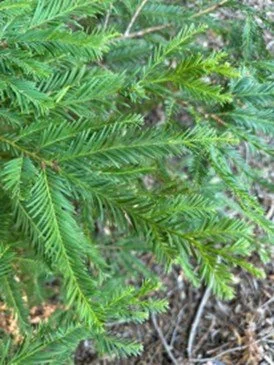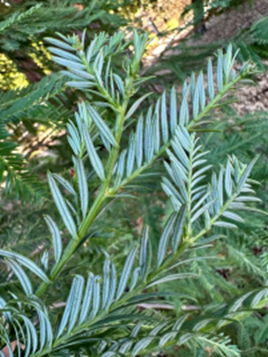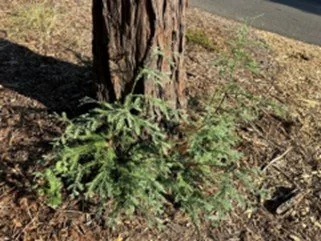Coast Redwood
Sequoia sempervirens
Redwoods are evergreen conifer trees named for their fibrous, cinnamon-brown bark and reddish heartwood. Coast redwoods are the tallest species of tree on Earth, and their trunks can grow to 26’ around.
Redwood branches drape downwards but turn up towards their ends. The needles (leaves) of redwoods are ½–¾” long, shaped like a double-edged sword, and arranged in flat sprays. They are dark green on the top surface and grayish-blue on the bottom surface. Redwood cones are small, about 1” long, and form at the tips of branches. There are pollen (male) cones and seed (female) cones; both occur on the same tree but on different branches.
Stewardship Considerations
Redwoods are usually fast-growing, but in poor soil and dry conditions small trees may be decades old. Redwoods vigorously stump-sprout, and can also sprout anywhere along their trunks.
Redwoods are tolerant of pruning.
It is normal for older, inner needles to turn brown and shed in late summer. If new growth at the tips of branches turns brown, however, this may indicate poor health or drought-stress.
Redwood forests historically burned at regular intervals, perhaps as often as every 20–30 years. Their seed germination is assisted by wildfire. Older redwoods are fire-resistant, but these trees are resinous and drop copious amounts of litter, creating fire-safety concerns in urban and suburban environments.
Bottom left center: Tips of redwood branches with needles arranged in flat sprays
Bottom center: Underside of redwood needles.
Bottom center: Coast redwood cones.
Bottom right center: Redwood bark.
Bottom right: Basal sprouting.
Print this ID Card
Learn more about coast redwoods from the California Native Plant Society














